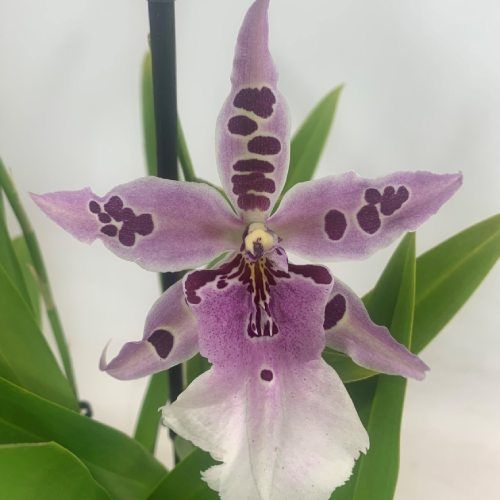Cambria Orchids
Cambria Orchids
- -30%
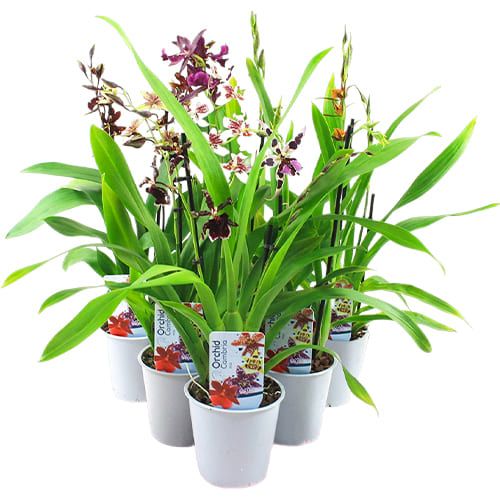 Cambria Orchids Collection (5 different varieties)Sku: 20003815 plants in pkgIn stock€65,29 €93,27
Cambria Orchids Collection (5 different varieties)Sku: 20003815 plants in pkgIn stock€65,29 €93,27 
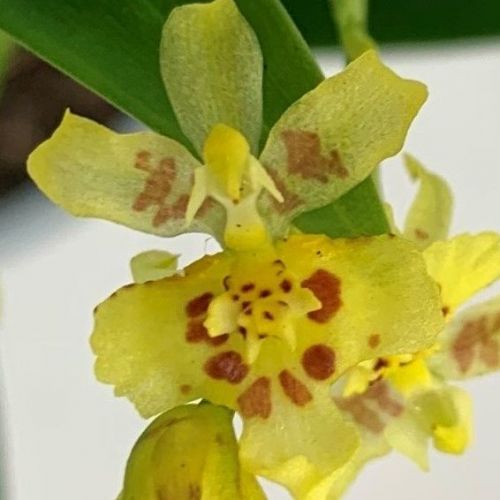
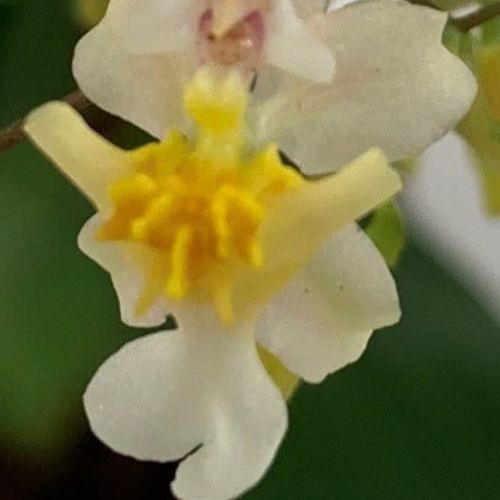



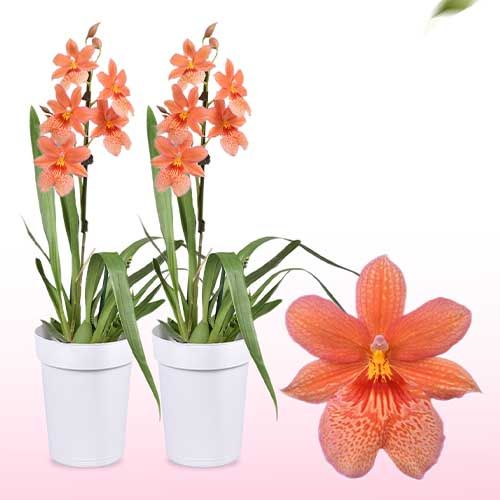
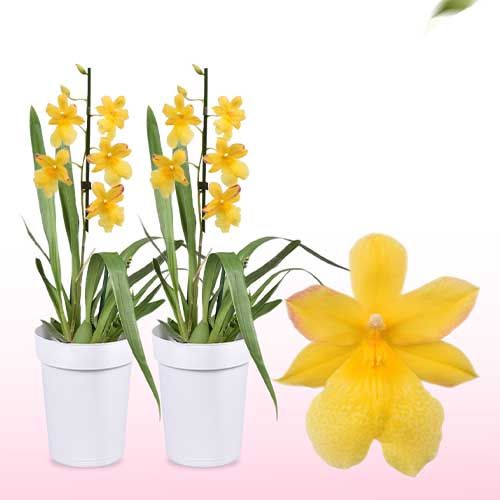
Last Reviews
Cambria Orchids - Captivating Beauty and Elegance for Orchid Enthusiasts
If you have a passion for orchids and desire a remarkable and enchanting addition to your garden or living space, search no more than the extraordinary Cambria Orchid group. This blend of orchids is in high demand due to its distinct features, diverse array of colors, intricate patterns, and varied shapes, all contributing to its stunning allure. Within this piece, we shall delve into the magnificence of Cambria Orchids and offer crucial advice on cultivating and tending to these awe-inspiring flora.
Exploring the Splendor of Cambria Orchids: A Remarkable Orchid Genus
The mesmerizing Cambria Orchids are the result of a crossbreeding process involving four distinct orchid genera: Brassavola, Laelia, Cattleya, and Epidendrum. These remarkable orchids boast magnificent, eye-catching blooms that come in a splendid array of hues, spanning from vivid reds and purples to delicate pinks and creamy whites. Renowned for their captivating beauty, Cambria Orchids are highly valued and favored by enthusiasts of these exquisite flowers.
Unveiling the Origins and History of Cambria Orchids: A Journey through Time
The inaugural Cambria Orchid was ingeniously bred by Charlesworth and bestowed with the name inspired by the historical Roman province of Cambria. Subsequently, numerous captivating strains and hybrids have been meticulously cultivated, elevating Cambria Orchids to the pinnacle of diversity and fascination within the realm of orchid genera worldwide.
Discovering the Unique Characteristics and Growing Requirements of Cambria Orchids
Discovering the Unique Characteristics and Growing Requirements of Cambria Orchids section highlights the different species and hybrids of Cambria Orchids, their unique colors, patterns, and shapes, and their ideal growing conditions. It provides essential information on the light and temperature preferences, the ideal orchid potting mixes, and the watering and fertilization techniques needed for healthy growth.
Understanding Cambria Orchids: Species, Hybrids, and Varieties
Cambria Orchids belong to a diverse group of hybrids, encompassing numerous species and variations. Among the commonly available Cambria Orchids are the sought-after varieties of Cambria Prince Charming, Cambria Tethys, and Cambria Dawns Delight. Each of these distinct cultivars possesses its own set of characteristics and necessitates particular care in order to flourish.
Celebrating the Enchanting Features of Cambria Orchids: Colors, Patterns, and Shapes
Cambria Orchids showcase an awe-inspiring array of colors, patterns, and shapes, rendering them truly remarkable. These orchids boast expansive, extravagant flowers adorned with intricate patterns and distinct forms, which bestow upon them a captivating allure when integrated into any living space or garden. The blossoms themselves can span up to 12 cm in width and exhibit a remarkable abundance of up to 15 blooms per stem.
Creating the Ideal Environment: Light and Temperature Preferences for Cambria Orchids
To prosper and flourish, Cambria Orchids necessitate bright, indirect light. They thrive in temperature ranges spanning from 60 to 80 degrees Fahrenheit, making them well-suited for indoor cultivation. It is crucial to shield Cambria Orchids from direct sunlight, as it can harm the foliage and blossoms. If cultivating these orchids outdoors, it is advisable to position them in shaded regions for optimal growth.
Orchid Potting Mixes: Choosing the Perfect Substrate for Cambria Orchids
For Cambria Orchids to flourish, it is essential to cultivate them in a substrate that promotes efficient air circulation and water drainage. Orchid potting mixes consisting of materials like bark, perlite, and charcoal are highly suitable for Cambria Orchids as they supply the required nutrients and offer robust support for their vigorous development. Repotting Cambria Orchids should be carried out approximately every 1-2 years or when the potting mix begins to deteriorate.
Watering Techniques and Fertilization: Essential Care Tips for Cambria Orchids
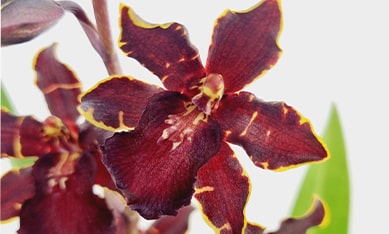
Cambria Orchids require regular watering, but its essential not to overwater them. Allow the substrate to dry out slightly before watering and avoid getting water on the leaves or flowers. Fertilize Cambria Orchids regularly with a balanced orchid fertilizer to promote healthy growth and flowering.
Mastering the Art of Cultivating Cambria Orchids at Home
Mastering the Art of Cultivating Cambria Orchids at Home section provides essential tips for orchid enthusiasts who want to care for their Cambria Orchids. It includes information on orchid repotting, pruning, staking, and encouraging healthy growth. Additionally, it provides insights on the ideal light, temperature, and humidity levels needed to encourage blooming success.
Orchid Repotting: When and How to Repot Cambria Orchids
Cambria Orchids should be repotted every 1-2 years or when the potting mix breaks down. Repotting should be done in the spring or early summer when the orchid is not in bloom. When repotting, be sure to use a clean pot and fresh potting mix.
Essential Care Tips: Pruning, Staking, and Encouraging Healthy Growth
Pruning and staking are essential for maintaining the shape and growth of Cambria Orchids. Remove dead or damaged leaves and flowers, and use stakes to support the stem if needed. Encourage healthy growth by providing proper light, temperature, and humidity levels.
Unlocking the Secrets to Blooming Success: Light, Temperature, and Humidity Considerations
To encourage blooming, Cambria Orchids require the right combination of light, temperature, and humidity. Provide bright, indirect light, temperatures between 60-80 degrees Fahrenheit, and humidity levels between 40-60%. Use a humidifier or pebble tray to increase humidity levels if necessary.
Showcasing the Exquisite Beauty of Cambria Orchids in Full Bloom
Showcasing the Exquisite Beauty of Cambria Orchids in Full Bloom highlights the importance of providing proper care to maximize flowering potential during the blooming season. To capture the elegance of these orchids, use a macro lens and experiment with different angles and lighting. Photography tips are also provided for orchid lovers who want to capture the beauty of these remarkable plants.
Maximizing Flowering Potential: Orchid Care During the Blooming Season
During the blooming season, its essential to provide proper care to maximize the flowering potential of Cambria Orchids. Continue to provide bright, indirect light, proper temperatures, and humidity levels. Avoid moving the orchid while its in bloom, as this can cause damage to the flowers.
Capturing the Elegance of Cambria Orchids: Photography Tips for Orchid Lovers
Photographing Cambria Orchids can be a challenge due to their intricate patterns and unique shapes. To capture the elegance of these orchids, use a macro lens and experiment with different angles and lighting. Try using a white background to highlight the colors and patterns of the flowers.
Overcoming Challenges and Troubleshooting for Cambria Orchids
Overcoming challenges and troubleshooting for Cambria Orchids involves prevention and treatment of common orchid pests and diseases. Common pests include spider mites, mealybugs, and scale insects, which can be treated with insecticidal soap or neem oil. Diseases such as root rot can be prevented by providing proper drainage and not overwatering. Checking for nutrient deficiencies and watering problems can also help troubleshoot growth issues.
Dealing with Common Orchid Pests and Diseases: Prevention and Treatment
Like all orchids, Cambria Orchids are susceptible to pests and diseases. Common pests include spider mites, mealybugs, and scale insects. Treat pests with insecticidal soap or neem oil. Diseases such as root rot can be prevented by providing proper drainage and not overwatering.
Troubleshooting Growth Issues: Nutrient Deficiencies, Watering Problems, and More
If you notice slow or stunted growth, discolored leaves, or other signs of distress, it may indicate a nutrient deficiency or watering problem. Check the substrate for proper drainage and consider fertilizing with a balanced orchid fertilizer.
Frequently asked questions about Spring Flowering Cambria Orchids
What do I do if my Cambria orchid does not flower?
Cambria orchids may not flower at times, but are usually hardy. Make sure you give them the right care and give them time. They will usually flower again when the conditions are right.
Are Dutch Cambria orchids poisonous to pets?
Cambria orchids are generally non-toxic to pets. However, it is advisable to keep pets away as they could damage the plants.
Are there any special tips for caring for Cambria orchids?
Yes, you will find specific care tips for Cambria orchids in the product description. These orchids require slightly more moisture than other varieties.
Which Danish Cambria orchid varieties do you offer?
Our range includes a variety of Cambria orchid varieties, including Cambria hybrids in different colours and designs.
Can I buy Cambria orchids in your shop?
Yes, you can buy Cambria orchids from our online flower and plant shop. We offer a selection of different varieties and sizes.











